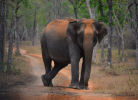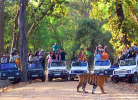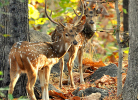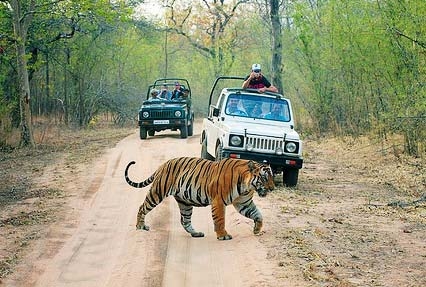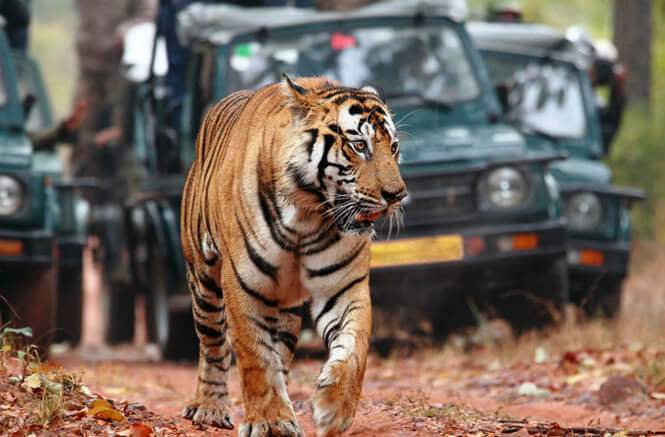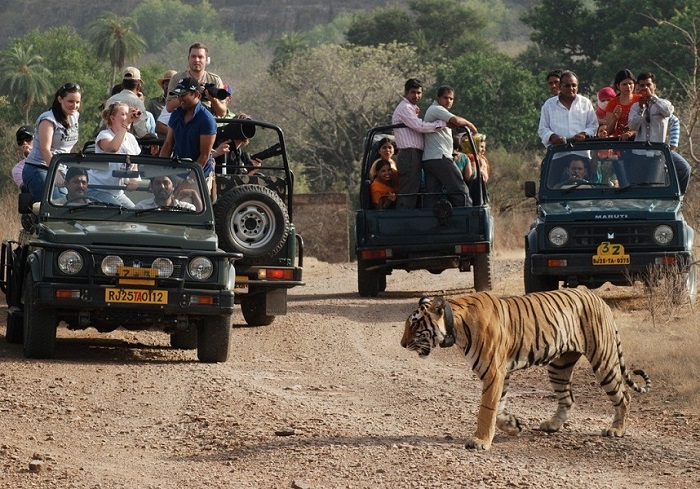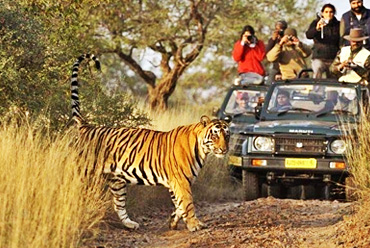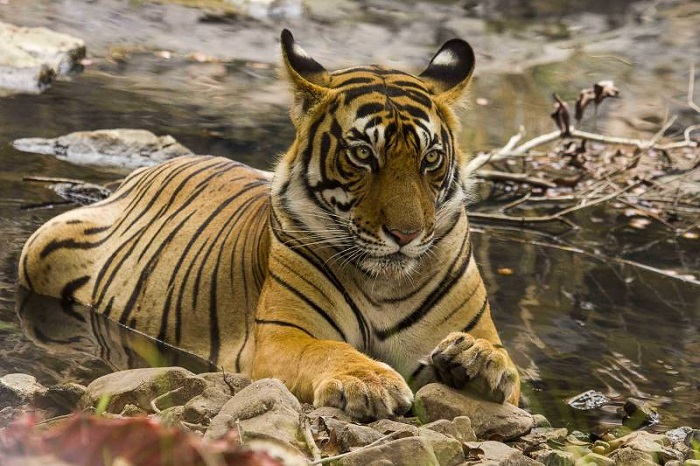Ranthambore National Park Tours
Ranthambore is one of the famous wildlife tourism destinations in the country. Located in Sawai Madhopur of Rajasthan, this park is even a part of numerous luxury train itineraries. This is one of the very few parks with high frequency of tiger spotting. The beauty of the ambience and nature comes from the location of the park, amidst Aravalli and Vindhya ranges. This tiger reserve is famous for safari rides and birdwatching. The park is also home to 10 th century Ranthambore Fort, which holds a few ancient temples.
History
The name of the park comes from the ancient hill fort, Ranthambore Fort, located inside the reserved forest region. During the imperial rule in Rajasthan, the forest regions were hunting grounds for the royals of Jaipur. The forest area fell under the reign of the Jaipur kings, who allowed the locals to collect resources from the forest and in return pay taxes to the treasury department of the kingdom.
The hunting was occasional and for recreation and it did not affect the balance of ecosystem until 18 th – 19 th century. The commercial hunting and exploitation of forest resources began and the forest cover started to degrade. Thus, in 1955, the forest came under the control of numerous legal protections and was named as Sawai Madhopur Sanctuary, named after the region where the park is located, Sawai Madhopur. In 1973, the government conducted a conservation program to tackle the diminishing number of tigers and the park became only of the early tiger reserves of the country. Only 60 square miles of the sanctuary was under the tiger reserve project.
In 1980, local villages around the forest region were relocated and the areas were added to the forest cover, making the reserve, 282 square km in area. The forest region was tagged as Ranthambore national park. Within three years, adjacent forest reserves were added to this park and Ranthambore National Park became 647 square kilometer wide. Later, the Kela Devi sanctuary and Sawai Mansingh sanctuary were added to the Ranthambore tiger reserve area. In 2014, the tiger count reached 64 and thus, today, spotting tigers is quite easier in Ranthambore National Park.
Best Time to Visit
Ranthambore National Park is open from October to June. The best time to visit the park is from October to May. The winter season, October to March is the best time to visit for spotting birds and animals, easily. This is also the right time to spot panthers easily. If you visit during December and January, the park will be filled with migratory birds and the region will be lush with fresh flora.
The Ranthambore tiger reserve has a thick forest cover. Thus, summer is the best time to visit to spot predatory animals. During summer, the smaller shrubs and grasses would dry off, making it easier to spot animals. Also, summer dries off small streams inside the park. Thus, animals have to come out of the forest cover to the Padam Lake or Surwal Lake to drink water.
Thus, it is easier to spot animals. However, spotting birds would be hard during summer and the temperature is scorching hot and humid.
Monsoon is the worst time to visit the park. Monsoon starts in July and ends in September. The park will be closed during this season because of the marshy ground and breeding season. The park is open from sunrise to sunset. It is best to visit the park during sunrise or just before sunset to spot numerous animals.
How to Reach?
The closest airport is located in Jaipur, which is 180 km away from the park. From Jaipur, you can find trains to Sawai Madhopur or hire taxis and buses from the airport to the park. The closest railway station is located in Sawai Madhopur, 11 km away from the park. You can find buses and taxis from the railway station to the park. The station in Sawai Madhopur receives frequent trains from surrounding regions of Rajasthan. If you are planning to choose road transportation, you can find direct buses from major cities of Rajasthan to the park. You can also hire taxis from surrounding regions.
- Distance between Ranthambore national park and Udaipur – 406 km
- Distance between Ranthambore national park and Gwalior– 289 km
- Distance between Ranthambore national park and New Delhi – 395.5 km
- Distance between Ranthambore national park and Lucknow– 589 km
- Distance between Ranthambore national park and Agra – 261 km
- Distance between Ranthambore national park and Bikaner – 526 km
- Distance between Ranthambore national park and Bharatpur – 207 km
- Distance between Ranthambore national park and Mumbai – 1097 km



